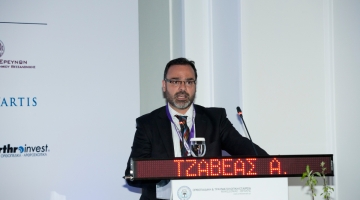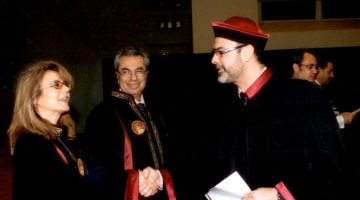Neck pain
The bony skeleton of the neck is the cervical spine and consists of seven vertebrae, which are hinged together, while stability is guaranteed by the existence of the ligaments and muscles that surround them. In the center of the cervical spine there is a channel called spinal tube, and therein lies the spinal cord, the nervous tissue that connects the brain to the rest of the body. The sections of nerves exiting called cervical nerve roots and innervate areas of the shoulders, neck and the upper part of the back.
Many individuals develop stiff and painful neck without clear causes. This usually happens after a micro - injury, an awkward movement or after prolonged exposure to air stream. Unfortunately, the underlying cause of pain in these cases is not clear, and the condition is called "non-specific neck pain." This is the most common type of neck pain.
Other causes of neck pain is cervical spondylosis, in which there are degenerative changes of the cervical spine with radiographic findings. Whiplash injury is the standard movement of the neck of a car passenger which receives hit in the rear of the car. The injury can cause prolonged neck pain and stiffness. In a few cases the cause of pain is the herniated intervertebral disc.
The pain often called "cervical syndrome" and the reason is that frequently it is associated with other symptoms such as torticollis (neck muscle spasm), stiffness, crepitation (noisy movements, sounds perceived by the patient during cervical movements), dizziness or blackout (dizziness caused when the patient turns his head up) due to the pressure of the vertebral artery by osteophytes. Finally, neck pain that persists for long periods of time can cause chronic fatigue and depression.
Practical advice
- Carefully adjust your posture at work - often neck pain is due to poor posture - seek advice from your doctor
- Simple drugs like acetaminophen, could improve the symptoms. Anti-inflammatory drugs would be good to be prescribed by your doctor
- Simple exercises and massage of the head creates a feeling of increased heat and reduce pain
- Try to reduce stress: stress can cause tension headache resembling cervical syndrome
- A physiotherapist can help with advice on good posture, physiotherapy and massage
- If pain persists for longer visit an orthopedic surgeon for further assessment and any examinations








